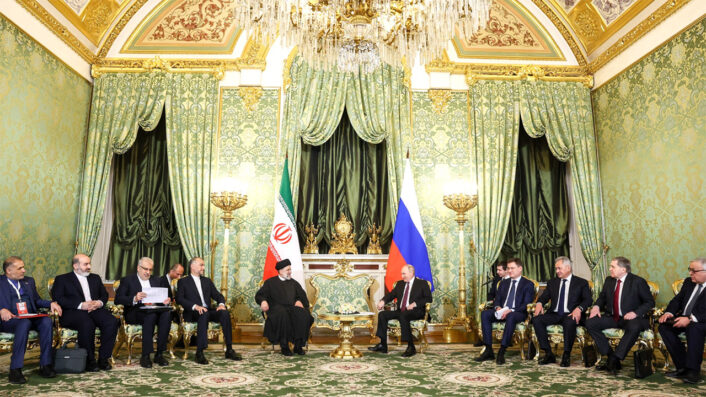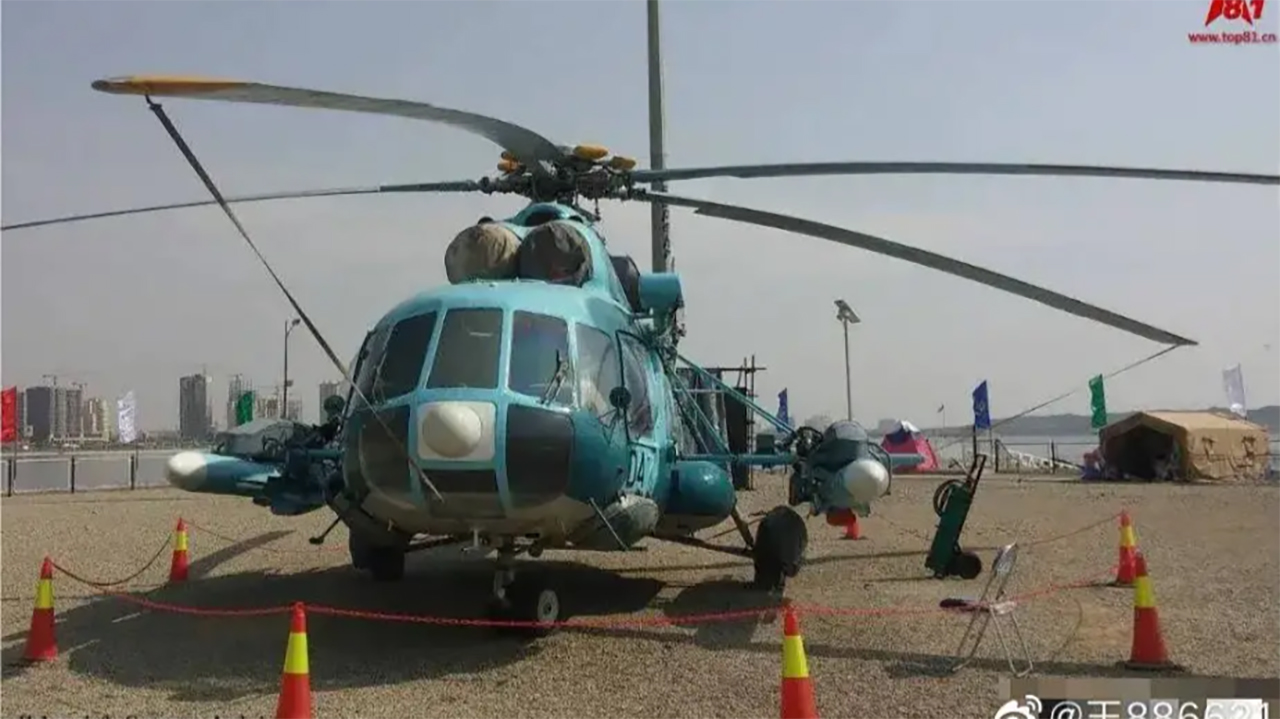The first units are scheduled to arrive this year, with the rest of the deliveries expected to be completed over the next three to four years.
Iran apparently struck a deal with Russia to buy 12 helicopters for emergency services in April 2024, with deliveries expected to begin this year, according to reports from Tehran and Moscow. This was revealed by the Head of the Relief and Rescue Organization of the IRCS (Iranian Red Crescent Society), Babak Mahmoudi, to the IRNA (Islamic Republic News Agency).
According to Mahmoudi, “Iran signed a contract to purchase 12 rescue helicopters with night vision capability and three firefighting helicopters […] late in April.” With a reported cost of $ 500 million, Russia said that it could “deliver four helicopters by the end of the current Iranian calendar year.” The revelation is stunning, as it bares both the sense of urgency in the Iranian leadership in upgrading its aging rotary wing fleet, and the misfortune.
Iran’s former President Ebrahim Raisi, along with foreign minister Hossein Amir-Abdollahian and other officials were killed in a helicopter crash on May 19. The contract for the new emergency helicopters was finalized just before the crash, reflecting the fact that the broader effort by the Iranian government to modernize its obsolete fleet was already ongoing before the fatal crash and not a consequence of that event.
The Bell 212 on which the President and officials were flying crashed in the foggy and mountainous regions near Tabriz in northwestern Iran, raising questions about the country’s aging civil aviation fleet. Naturally, the accident spawned a massive search operation to locate the debris.
The Financial Times, quoting a study by Cirium, said the 1960s-era Bell 212 might have been acquired by the Iranian Air Force in 1994, based on its serial number C-9207. It is reported that the average age of the active aircraft in Iran’s passenger fleet is almost 28 years, more than double the global average. Some reports indicated that the Bell 212 might have been transferred from utility military to VIP transport role.
Under U.S. sanctions, Tehran has been unable to access vital aviation components and spares for many of its American-origin helicopters. Because of this, Iran often sourced parts and aerospace assemblies from the black market and circuitous trade routes from third countries. The sanctions circumvention practices have now proven to be unsustainable and outliving their utility after nearly three decades.
Even though aviation experts have said both weather and human error might have played a role in the Bell 212 crash, it cannot be unrelated from the broader crisis in the Iranian military and civilian aviation sector, worsened by the confrontation with the United States. Conversely, Tehran’s choice of Russian emergency helicopters also reflect both the absence of such concerns, since Moscow does not recognize US sanctions and their burgeoning diplomatic ties.
Which are these helicopters?
Russia’s Vedomosti quoted unidentified officials in its aerospace sector, who said the first units were scheduled to arrive this year, with the rest of the deliveries expected to be completed over the next three to four years. The helicopters are either the Mi-8, Mi-17 or Mi-171, developed by Mil and expected to be built by the Kazan plant.
Yuri Lyamin, an expert at the Center for Analysis of Strategies and Technologies (CAST), said Iranian civil aviation “mainly” operates “Mi-17/Mi-171 helicopters acquired mostly in the 2000s, as well as old Western helicopters that were purchased before the 1979 Revolution or were later purchased in circumvention of sanctions on the secondary market.”

Lyamin added that Iran has “three Mi-17V-5 search and rescue helicopters, produced by Mil’s Kazan Helicopter Plant, and five more Mi-171s assembled at the Ulan-Ude Aviation Plant.” It is not clear the year in which they were bought.
In order to “replace the older Western helicopters” and have “lighter” helicopters for the IRCS, Iran reportedly looked at the Kamov Ka-226T helicopter, which was also tested in the country. However, since it uses a “Western engine” (Turbomeca Arrius 2G from France), and a “Russian engine just begun testing,” that plan was ruled out. The “manufacturers clearly would not give Russia permission to supply Iran,” said the source.
Russia’s Mi-17 series (or Mi-8M as named in Russian service), are popular helicopters in the global scene, used for both military transport, gunship, civilian passenger and utility flights, especially in inhospitable and high altitude terrain. They are operated, among others, by Mexico, India, Afghanistan, Egypt, Bangladesh, China, Azerbaijan, Slovakia, Indonesia, Malaysia, Bulgaria and Kazakhstan.
No sign in defense contacts or diplomatic exchanges
However, the recent series of defense and diplomatic contacts between the two countries did not show any hint of the deal. An Iranian military delegation on Aug. 21, 2023 discussed “bilateral military cooperation in land forces” and “implementing military projects” to “improve the combat readiness of both countries.”
On Sept. 19, 2023 then Defense Minister Sergei Shoigu visited Tehran and attended a defense exhibition, seeing Iran’s latest advances in UAVs and missiles. Assessments then said both countries had identified defense industrial cooperation as one of the bedrocks of their diplomatic partnership, driven by a shared hostility towards the U.S., resisting “sanctions pressure” and enhancing “military cooperation.”
On April 3, Deputy Defence Minister Colonel General Aleksandr Fomin with Iran’s Ambassador Kazem Jalali, discussed “topical issues of bilateral military and military-technical cooperation and exchanged views on regional security issues.” The deal also was not among the topics discussed during Raisi’s Dec. 7, 2023 visit to Russia and the meeting with Putin. Transcripts released from the Kremlin show both leaders discussing trade, infrastructure, education and the current situation in Palestine.
Hush-hush deal?
It appears that Iranian delegations had already identified the helicopters during unofficial visits. It is also not unprecedented that, unlike military drills and diplomatic exchanges, defense deals involving military equipment purchase between Russia and Iran have been kept out of official announcements.
For instance, the arrival for Yak-130 jet trainer aircraft in Iran in early September 2023 was not announced by either of the two governments, or even Russia’s UAC (United Aircraft Corporation). The reports from Vedomosti and IRNA did not contain official announcements either, as officials and persons not involved with civil aviation or military projects later revealed the deal.
Iranian authorities are well seized of the need to have a modern fleet of transport and emergency services helicopters and set the ball rolling much before the accident. Unfortunately, the crash took place much sooner, between the time the reported deal was struck and the aircraft arrived in Iran.













